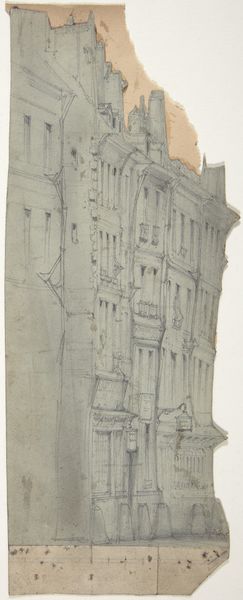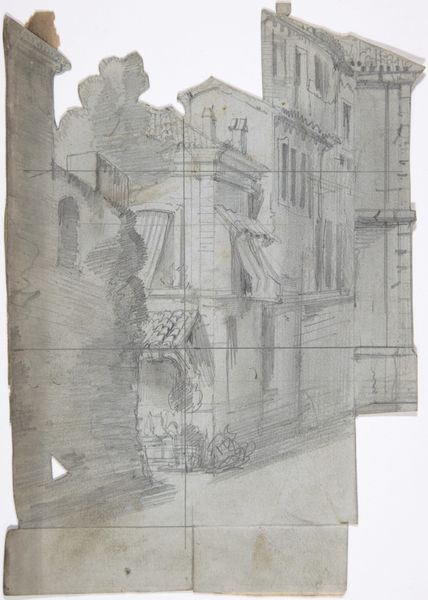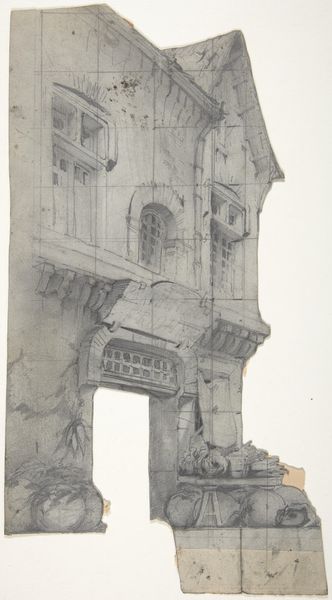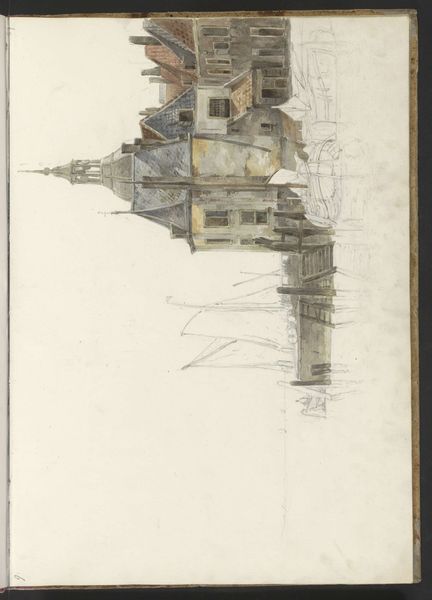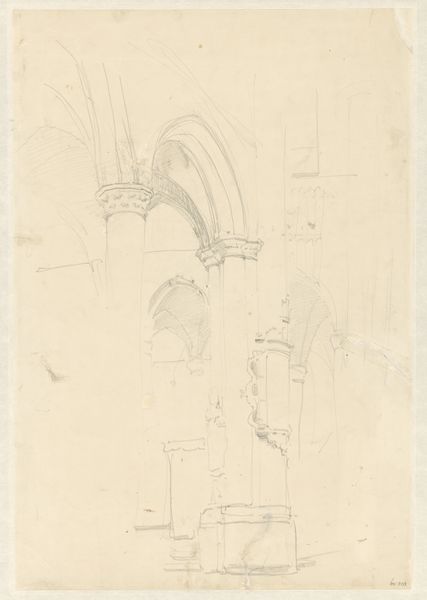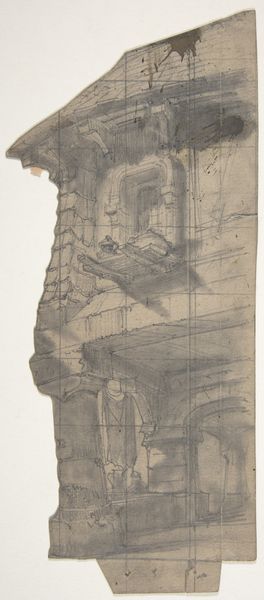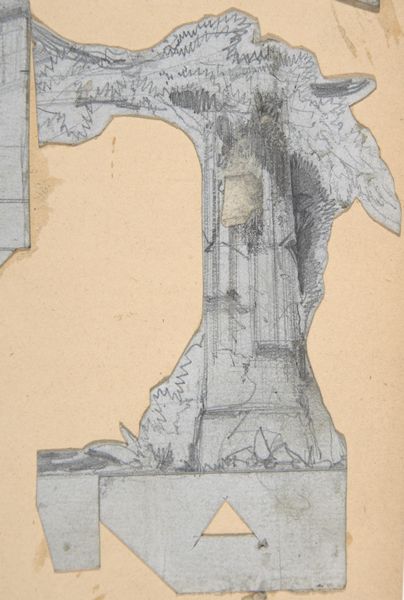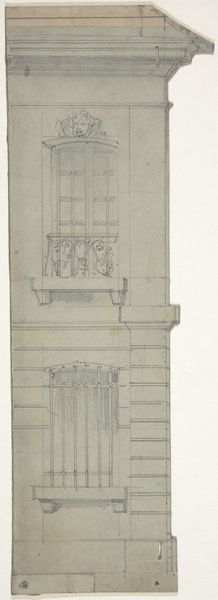
Design for a Stage Set at the Opéra, Paris 1830 - 1890
0:00
0:00
drawing, print, watercolor, ink
#
drawing
# print
#
charcoal drawing
#
watercolor
#
ink
#
geometric
#
cityscape
#
charcoal
#
watercolor
Dimensions: Irregular sheet: 9 7/16 x 3 1/8 in. (24 x 7.9 cm)
Copyright: Public Domain
Curator: This is Eugène Cicéri's "Design for a Stage Set at the Opéra, Paris," created sometime between 1830 and 1890. The artist used watercolor, ink, and charcoal on paper. Editor: My immediate reaction is that it evokes a kind of romantic ruin. The monochromatic washes and fragmented composition lend it a melancholic, almost ghostly atmosphere. Curator: Indeed. Notice the stark contrast between the precise architectural detailing and the loose, almost sketch-like rendering of the overall form. It showcases the labour inherent in theatre production and challenges our perception of "finished" versus "unfinished." Editor: Absolutely. This speaks to a specific moment in the history of Parisian opera, and the theatre itself serves as a charged political and cultural space, reflecting the power dynamics within Parisian society at the time. How does Cicéri negotiate these issues of class, identity, and gender? Curator: Well, as a stage design, the artwork presents the infrastructure that literally facilitates representation. One could interpret the heavy, perhaps decadent, details as alluding to excess—a consequence of concentrated cultural capital and class disparity. This intersects quite overtly with gender through roles acted out on stage. Editor: True. I also think of the actual individuals employed behind the scenes, including the diverse laborers who build these massive constructions. Their own class positions were largely absent in representations of theatre back then, of course. And this raises the important question: whose stories are not being told in this artistic moment? Curator: A crucial inquiry. By understanding the materiality, labour, and staging, we better examine what's prioritised and thus amplified in a theatrical social context. This rendering serves not merely to aesthetically delight, but it brings attention to the social context through the production itself. Editor: Reflecting on this design, I find it such a compelling fragment, sparking deeper consideration regarding historical narratives, visibility, and representation within the framework of operatic spaces and societal power structures. Curator: Agreed; looking at the artistry, the ink and charcoal really reveal the ways process and representation can meet on paper to produce something really dynamic.
Comments
No comments
Be the first to comment and join the conversation on the ultimate creative platform.

